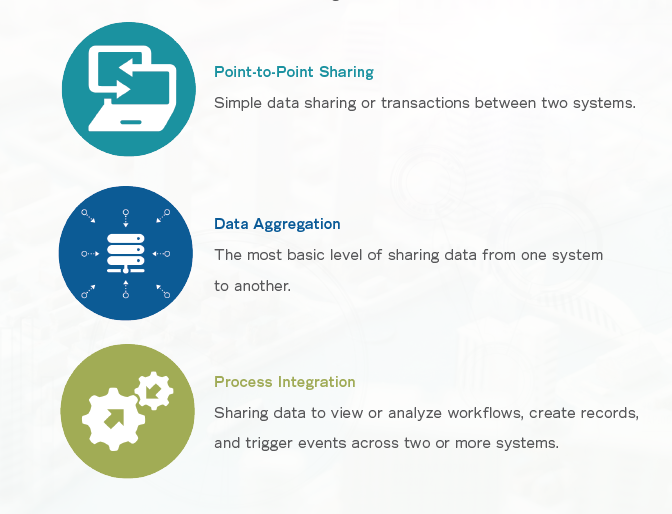Why Data Sharing and Integration Both Matter
March 14, 2019 by Meredith Trimble

Many local governments have a dozen or more back-end systems installed, with processes and information trapped in individual silos. Information doesn’t move to the places it needs to in order to be useful for smarter daily operations or strategic future planning.
But for growing local governments, creating a modern digital infrastructure that leads to a connected community is all about data sharing and integration. What’s the difference between the two, and why does it matter?
Sharing
Typical local governments can have a dozen or more back-end systems installed, with processes and information trapped in individual silos. Think about a building development project. The city planner needs access to information from GIS systems, land records, property assessment, and asset management, among others. Chances are slim that the planner has self-service access to real-time data from every relevant system.
The type of data sharing that would help the planner is a “point-to-point” type of sharing. Information created by one department’s system is shared with another for enhanced benefit. For example:
- Usage data collected from smart water meters is transmitted to utility billing.
- A judge in criminal court instantly accesses and views records in the police system.
- An assigned property value in the appraisal system appears on a map in the city planner’s land use management system.
- Asset maintenance costs are shared with the finance department’s ERP system.
In other words, point-to-point sharing is simple data transactions between two systems. While this isn’t technically difficult to accomplish, barriers remain. These barriers can be older technology that doesn’t connect to new, smart technology, vendors unwilling to cooperate with competitors, or department personnel who fear losing control of their information.
Aggregation
Data aggregation differs from the point-to-point sharing in that it is a type of integration that facilitates analysis, display, and engagement. The difference rests in its underlying purpose.
A city building a pathway to a connected community brings together data to make meaningful discoveries and shares comprehensive data internally and externally. This may be a budget dashboard intended to show transparency, plotting crime statistics and police activity by neighborhood, or linking property value data with homeless reports to support affordable housing initiatives. Special data, financial data, smart metrics, and more can be aggregated from two or more sources for public access through citizen portals or for day-to-day operations through internal management portals.
The challenges that exist in point-to-point data sharing exist here as well, with an added obstacle of enterprise adoption. The promise and potential of data aggregation is that many sources of data are pulled together for enhanced performance, but when just one link is broken with a sub-par product, the whole system falters.

Integration
Most overlooked in data discussions is process integration. Unlike point-to-point data sharing and aggregation, which focus on having access to data across systems, process integration focuses on the workflows that are required between different departments to keep an operational process moving forward.
It’s typical government workflow for multiple departments to depend on each other for a project’s completion. Developers, planners, inspectors, and regulators, for example, all touch community development processes in separate steps. Similarly, a 911 dispatch call can involve patrol officers, commanders, court administrators, judges, prosecutors, and jailers. With each transfer to a new department’s workflow process, there is the potential for a bottleneck, miscommunication, or operational delay.
When process integration is achieved, the power of data is put to its highest use for maximum levels of efficiency and insight. This requires a technology confluence that builds all systems on the same foundation for immediate results and future growth. The greatest efficiencies occur through these fundamental elements:
|
|
|
- Identification authentication engine
|
- Proprietary content management
|
|
|
|
|
|
|
|
|
|
This technology confluence that connects back-office systems so that they can work together propels the Connected Communities Vision.